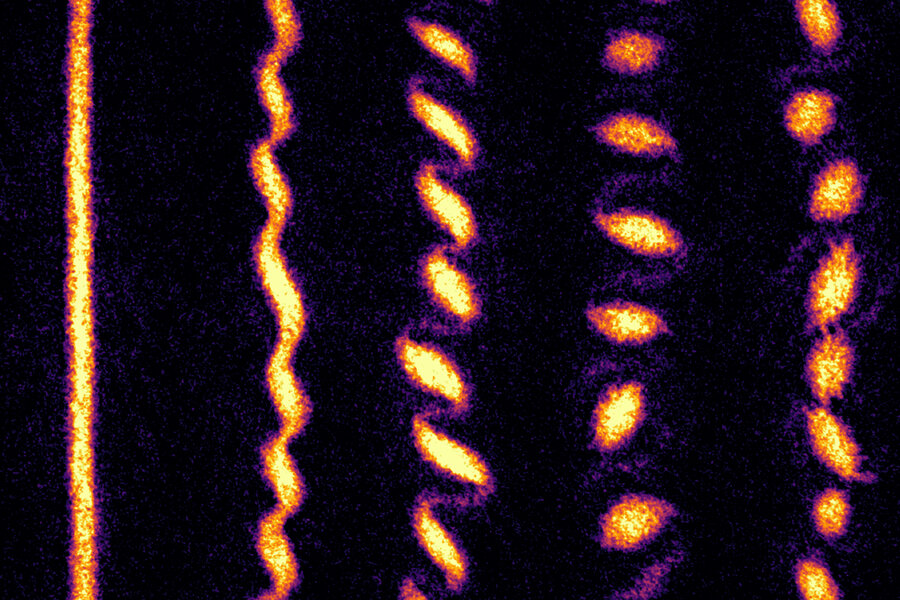The world we experience is governed by classical physics. How we move, where we are, and how fast we’re going are all determined by the classical assumption that we can only exist in one place at any one moment in time. But in the quantum world, the behaviour of individual atoms is governed by the eerie principle that a particle’s location is a probability. An atom, for instance, has a certain chance of being in one location and another chance of being at another location, at the same exact time. When particles interact, purely as a consequence of these quantum effects, a host of odd phenomena should ensue. But observing such purely quantum mechanical behaviour of interacting particles amid the overwhelming noise of the classical world is a tricky undertaking. Now, MIT physicists have directly observed the interplay of interactions and quantum mechanics in a particular state of matter: a spinning fluid of ultracold atoms. Researchers have predicted that, in a rotating fluid, interactions will dominate and drive the particles to exhibit exotic, never-before-seen behaviours. In a study published today in Nature, the MIT team has rapidly rotated a quantum fluid of ultracold atoms. They watched as the initially round cloud of atoms first deformed into a thin, needle-like structure. Then, at the point when classical effects should be suppressed, leaving solely interactions and quantum laws to dominate the atoms’ behaviour, the needle spontaneously broke into a crystalline pattern, resembling a string of miniature, quantum tornadoes. “This crystallization is driven purely by interactions, and tells us we’re going from the classical world to the quantum world,” says Richard Fletcher, assistant professor of physics at MIT. The results are the first direct, in-situ documentation of the evolution of a rapidly rotating quantum gas. Martin Zwierlein, the Thomas A. Frank Professor of Physics at MIT, says the evolution of the spinning atoms is broadly similar to how Earth’s rotation spins up large-scale weather patterns. “The Coriolis effect that explains Earth’s rotational effect is similar to the Lorentz force that explains how charged particles behave in a magnetic field,” Zwierlein says. “Even in classical physics, this gives rise to intriguing pattern formation, like clouds wrapping around the Earth in beautiful spiral motions. And now we can study this in the quantum world.”
https://phys.org/news/2022-01-physicists-ultracold-atoms-crystal-quantum.html


